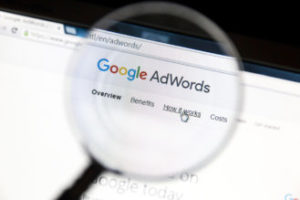 Enhanced CPC is changing. Here’s what you need to know and how it might impact your AdWords PPC accounts.
Enhanced CPC is changing. Here’s what you need to know and how it might impact your AdWords PPC accounts.
When is the change happening?
Google has indicated here that this change will start rolling out from early June 2017.
How did it used to work (pre-June 2017)?
Enhanced CPC looks for signals that indicate whether a particular search is more or less likely than average to convert. You still set a bid price, but AdWords dynamically adjusts the price by anything between -100% and +30%. This bid price is then what gets entered into the auction and is used to determine your ad rank.
This system allows you to keep control of your bids manually, but use the power of Google’s additional performance signals (including things like user interests, browser and operating system, as well as more standard ones that you can control directly such as location and time), to optimise bids. This means your account will automatically push harder for the impressions which are most likely to end in conversions, and less on the ones which won’t, ultimately driving an extra layer of efficiency to your bidding strategy.
How is it working moving forwards (post-June 2017)?
Google’s bidding systems have been significantly developing for many years, by introducing machine learning which allows decisions to gradually improve over time. By consistently testing and learning what the impact is when different signals combine, Google will be able to make more advanced decisions than ever.
The major part of the change is that the +30% cap is being removed, allowing AdWords the freedom to increase your bid price to whatever it deems appropriate based on the situation. We expect this change to be controversial and it could scare some users away from using the feature.
As a result of the changes, Google suggests that this eliminates the need for several other bid adjustments (location, time, RLSA etc.). However, it does still recommend that you set device bid adjustments as the system will not consider the performance of different devices.
How will it impact performance?
As this is a brand-new change, it’s hard to know exactly what the impact will be. However, my expectation is that this should make the system more powerful than ever before, and therefore, should improve the performance of accounts. We will be closely monitoring our accounts that use Enhanced CPC over the coming weeks to measure the change.
What is our opinion?
I’ve been impressed with the evolution of Google’s Smart Bidding systems over recent years, and have more faith in them than ever. By removing the +30% cap it means that Google isn’t going to be as restricted when it sees an extremely high potential for a conversion, which is definitely a good thing in my mind. The +30% was arbitrary in the first place, and I would want to bid higher when the possibility of conversion is higher.
Google have assured us that they will be keeping the average CPC below the bid price that you set so you will still have control over the spend, and your original bid price will still be respected.
The need to still make device adjustments makes a lot of sense, as Google often won’t know the full picture when it comes to the impact of mobile on other business goals (such as cross-device conversions and in-store visits). However, it makes sense that other bid adjustments shouldn’t be set as there is the risk of doubling up on decisions.
Whilst the change may seem scary, if Enhanced CPC is something you’re considering, I’d fully recommend that you test it, using a Drafts & Experiments campaign, in order to properly measure the impact that it has on your account.
If you would like to discuss how you can make the most out of Enhanced CPC on your campaigns, please get in touch to speak to one of our experts.


